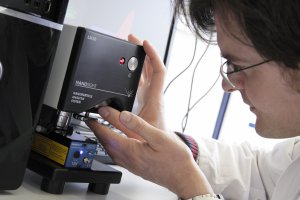Sep 7 2010
Munich-based company Coriolis PharmaServices GmbH is using NanoSight’s LM-20 nanoparticle characterization system to investigate the aggregation behaviour of protein drugs and vaccines.
Coriolis is a contract research organization for the formulation and analytics of pharmaceutical proteins and vaccines for their customers from national and international pharmaceutical companies. A special focus during formulation development is set on the characterization of subvisible particles and aggregation. The main application requirement for the NanoSight system is to measure the number and the size distribution of aggregates in pharmaceutical protein formulations and of vaccines, e.g. virus-like particles. Protein aggregation is a major stability issue and can result in reduced biological activity and enhanced immunogenicity of the product. Therefore, it is important to analyze the aggregation behaviour of pharmaceutical proteins and develop methods and formulations that avoid aggregation already at the beginning of formulation development.
 The NanoSight LM 20 system in use at Coriolis PharmaServices
The NanoSight LM 20 system in use at Coriolis PharmaServices
Coriolis uses a variety of instrumental techniques to quantify and size aggregates, depending on the size range of interest. Dynamic light scattering is ideal to analyze monodisperse systems, e.g. 5-20 nm range, but once the aggregates start to form and grow (in the hundreds of nm range), nanoparticle tracking analysis (NTA) from NanoSight gives a real distribution picture. For samples in the µm range, microflow imaging (MFI) and light obscuration are used.
In contrast to DLS, NTA works well with polydisperse samples giving an estimation of the total concentration of particles and the possibility to distinguish different size populations, e.g. 60 and 100 nm particles. This is not possible by DLS due to the poor resolution.
Speaking at the recent National Biotech Conference 2010 in San Francisco, the Coriolis team under Dr Michael Wiggenhorn reported that to achieve a comprehensive characterization of nanoscale particulates in protein formulations, it is important to combine techniques that operate in that range. However, the ability of NTA to provide a real-time image of samples permits the analysis of potentially occurring difficulties during the measurement which is not possible using DLS.